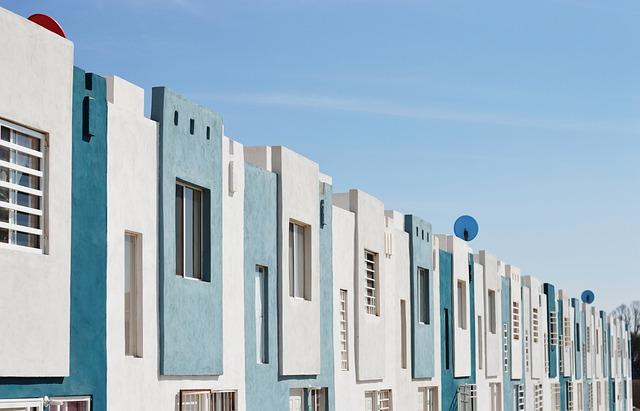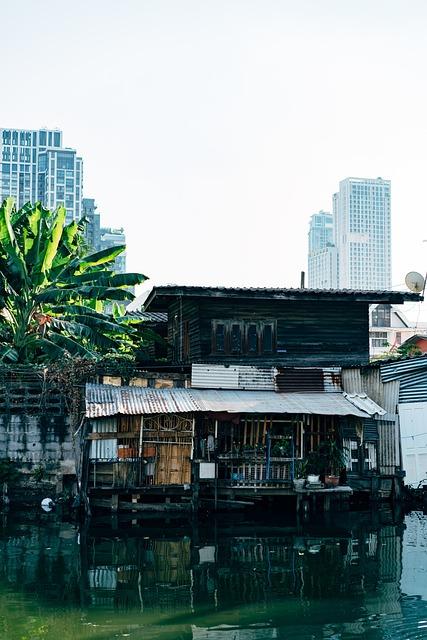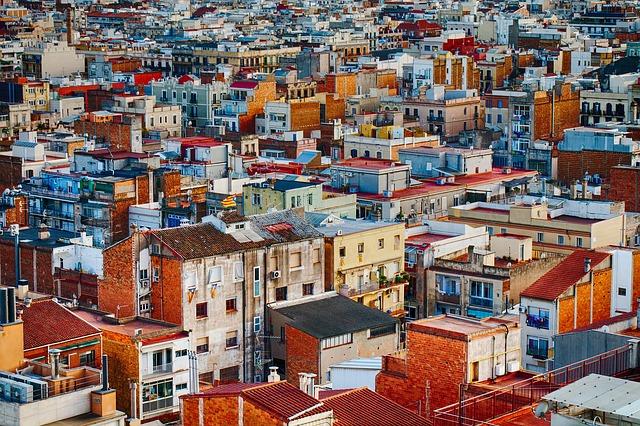In the vibrant tapestry of Pakistan’s cities, where bustling markets collide with serene parks, lies a stark and growing disparity that demands our attention: the urban housing crisis. As millions flock to urban centers in search of better opportunities, the promise of progress often leads to the harsh reality of overcrowded slums and unaffordable living conditions. This article delves into the multifaceted dimensions of inequality that underpin the housing crisis in Pakistan’s urban landscape, exploring the historical, economic, and sociopolitical factors at play. By unpacking the complexities of this pressing issue, we aim to shed light on the challenges faced by countless families striving for shelter, dignity, and a chance at a brighter future, while also illuminating the paths forward toward sustainable solutions.
Exploring the Root Causes of Urban Housing Disparities in Pakistan
The complexities surrounding urban housing disparities in Pakistan stem from a myriad of interrelated factors that have evolved over time. Rapid urbanization has led to a surge in population density, particularly in major cities, where infrastructure development has struggled to keep pace. Coupled with inconsistent governmental policies and a lack of effective urban planning, this has resulted in insufficient affordable housing options, pushing low-income families into informal settlements. Additionally, economic disparities contribute to this crisis, as wealth is often concentrated among a limited segment of the population, leaving a significant portion unable to access decent housing. Urban housing projects frequently prioritize profit over people, exacerbating issues of displacement and neglect in vulnerable communities.
Moreover, cultural and social factors play a crucial role in shaping housing disparity. Discrimination based on ethnicity, gender, and social class often dictate who has access to quality housing and where they can live. In many urban areas, marginalized groups face systemic barriers that limit their housing options. This situation is further complicated by government corruption and the misallocation of resources, where the needs of the affluent are prioritized while the poor remain overlooked. To address these deep-rooted issues, it is vital to initiate collaborative efforts involving government bodies, non-governmental organizations, and community leaders to champion equitable housing policies that prioritize the needs of all citizens, rather than just a privileged few.

Evaluating the Impact of Informal Settlements on City Dynamics
Informal settlements, often emerging as a byproduct of rapid urbanization, wield significant influence over the dynamics of cities in Pakistan. These neighborhoods, typically characterized by inadequate infrastructure and lack of formal recognition, alter the urban fabric in various ways. They contribute to social stratification and economic disparities, leading to a polarization of urban life. Residents of these settlements frequently face challenges such as limited access to essential services like education, healthcare, and sanitation, which in turn perpetuates a cycle of poverty and marginalization.
The impact of informal settlements extends beyond individual hardship; they can reshape urban policy and planning. Local governments must grapple with an evolving landscape, where the presence of such settlements necessitates innovative approaches to urban management. For instance, authorities may need to consider strategies that integrate these communities into the broader urban economy and infrastructure. Key aspects to focus on include:
- Infrastructure Development: Prioritizing basic needs such as water supply and sanitation.
- Community Engagement: Involving residents in decision-making processes to ensure solutions meet their needs.
- Sustainable Housing Solutions: Exploring affordable housing models that can be replicated across cities.
| Key Challenges | Potential Solutions |
|---|---|
| Limited Access to Services | Improving local infrastructure investments |
| Social Exclusion | Implementing inclusive community programs |
| Environmental Degradation | Promoting sustainable living practices |

Innovative Approaches to Affordable Housing Development
Amid Pakistan’s growing urban housing crisis, innovative strategies are emerging to transform how affordable housing is conceived and implemented. One promising approach is the integration of community-driven design which empowers local residents to actively participate in the planning process. By utilizing local materials and labor, these initiatives not only reduce costs but also enhance community ties and ensure that developments meet the actual needs of the inhabitants. Additionally, leveraging sustainable architecture, developers can create energy-efficient homes that minimize utility expenses for families, making long-term housing costs more manageable.
Another forward-thinking model is the development of micro-units and co-living spaces, which cater to single professionals and smaller families seeking affordability in urban centers. These compact living solutions encourage social interaction while maximizing available space. Furthermore, public-private partnerships represent a vital avenue for pooling resources and sharing risks, thus elevating the possibilities for larger-scale affordable housing projects. Consideration of mixed-use developments can bring together residential, commercial, and recreational spaces, fostering vibrant neighborhoods while providing essential services at walking distance. Below is a table illustrating the potential benefits of these innovative methods:
| Approach | Benefits |
|---|---|
| Community-driven Design | Empowers locals, uses local resources, reduces costs |
| Micro-units | Space-efficient, affordable, promotes social interaction |
| Public-Private Partnerships | Pools resources, shares risks, enables larger projects |
| Mixed-use Developments | Creates vibrant neighborhoods, encourages walkability |

Strategic Policy Recommendations for Sustainable Urban Growth
To tackle the urban housing crisis while promoting sustainable development in Pakistan, a multi-faceted approach is essential. Strategic land use planning should prioritize mixed-use developments that combine residential, commercial, and recreational spaces. This not only reduces reliance on transportation but also fosters vibrant communities. Moreover, the government should enhance affordable housing projects by incentivizing public-private partnerships, streamlining the regulatory framework, and increasing accessibility to financing for both builders and low-income families. The emphasis should be on environmentally friendly technologies to ensure that these developments are eco-sustainable and economically feasible.
Furthermore, community engagement must be at the forefront of urban development policies. Local stakeholders, particularly marginalized groups, should have a voice in the planning process to ensure their needs and aspirations are met. This can be facilitated through development forums that create dialogue between urban planners, policymakers, and residents. Additionally, incorporating green spaces and public transport solutions in planning can mitigate congestion and improve air quality, enhancing overall living conditions in urban areas. By establishing a framework that fosters collaboration and innovation, Pakistan can move towards a more equitable urban landscape.
The Way Forward
As we conclude this exploration of Pakistan’s urban housing crisis, it becomes clear that the challenge of inequality is not merely a statistic; it is a living reality for millions. As metropolitan areas expand and the urban landscape evolves, the pressing need for equitable housing solutions grows ever more urgent. The narratives of vulnerability weave through the fabric of cities, echoing the aspirations of families seeking security, dignity, and belonging.
While the complexities of this issue can often feel overwhelming, they also present an opportunity—a call to action for policymakers, urban planners, and citizens alike. By fostering collaboration and embracing innovative strategies, we can pave the way for inclusive urban development that honors the rights of all residents, irrespective of their socio-economic status.
In addressing the shortfalls of today, we hold the potential to redefine tomorrow’s urban environment. This is not just about building structures; it’s about creating communities where every individual can thrive. Let us turn our focus towards meaningful dialogue and concerted efforts, transforming the urban landscape of Pakistan into a tapestry woven with equity, compassion, and resilience. Together, we can address the disparities that persist and work towards a future where everyone has a place to call home.



